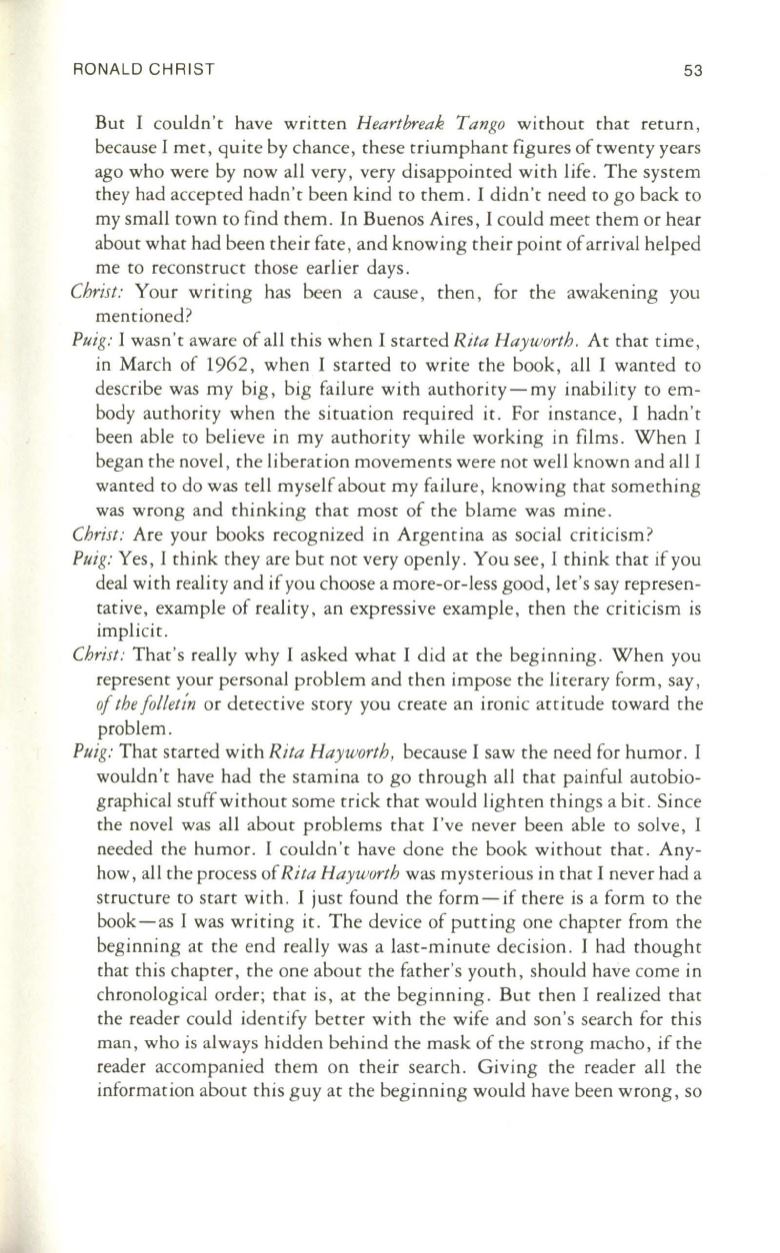
RONALD CHRIST
53
But I couldn't have written
Heartbreak Tango
without that return,
because I met, quite by chance, these triumphant figures of twenty years
ago who were by now all very, very disappointed with life. The system
they had accepted hadn't been kind to them . I didn't need to go back to
my small town to find them . In Buenos Aires, I could meet them or hear
about what had been their fate , and knowing their point ofarrival helped
me
to
reconstruct those earlier days .
Christ:
Your writing has been a cause, then, for the awakening you
mentioned?
Puig:
I wasn't aware of all this when I started
Rita Hayworth .
At that time,
in March of 1962, when I started to write the book, all I wanted to
describe was my big, big failure with authority-my inability to em–
body authority when the situation required it . For instance, I hadn't
been able
to
believe in my authority while working in films. When I
began the novel, the liberation movements were not well known and all I
wanted to do was tell myself about my failure, knowing that something
was wrong and thinking that most of the blame was mine .
Christ:
Are your books recognized in Argentina as social criticism?
Puig:
Yes, I think they are but not very openly. You see, I think that if you
deal with reality and if you choose a more-or-less good, let's say represen–
tative, example of reality, an expressive example , then the criticism is
implicit.
Christ:
That's really why I asked what I did at the beginning . When you
represent your personal problem and then impose the literary form, say ,
of thefolletin
or detective story you create an ironic attitude toward the
problem .
Puig:
That started with
Rita Hayworth ,
because I saw the need for humor. I
wouldn't have had the stamina to go through all that painful autobio–
graphical stuff without some trick that would lighten things a bit. Since
the novel was all about problems that I've never been able
to
solve, I
needed the humor. I couldn't have done the book without that. Any–
how, all the process of
Rita Hayworth
was mysterious in that I never had a
structure to start with. I just found the form-if there is a form to the
book-as I was writing it. The device of putting one chapter from the
beginning at the end really was a last-minute decision. I had thought
that this chapter, the one about the father 's youth, should have come in
chronological order; that is, at the beginning. But then I realized that
the reader could identify better with the wife and son's search for this
man, who is always hidden behind the mask of the strong macho, if the
reader accompanied them on their search . Giving the reader all the
information about this g uy at the beginning would have been wrong, so


